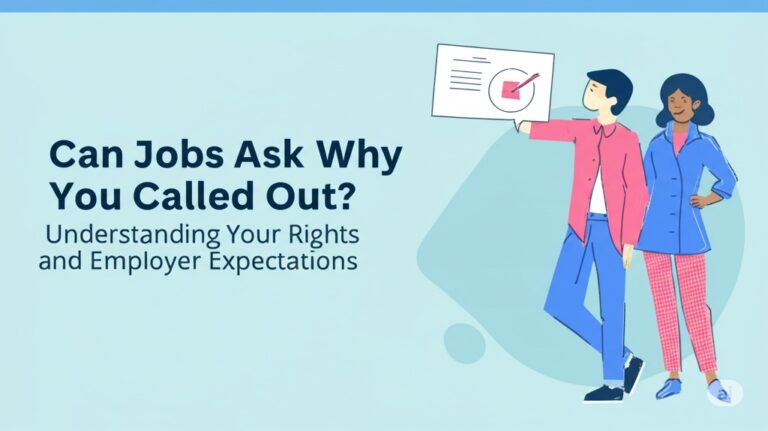
Introduction
When it comes to employment classifications, a common misconception is that all salaried employees are automatically exempt from overtime pay and other labor protections. However, the reality is more complex. Employee classification depends on various federal and state labor laws, including the Fair Labor Standards Act (FLSA) in the United States.
This article breaks down the distinction between exempt and non-exempt salaried employees, the key criteria for exemption, and what employees and employers should know about compliance.
What Does It Mean to Be an Exempt Employee?
Definition of an Exempt Employee
An exempt employee is not entitled to overtime pay under the FLSA. This classification applies primarily to employees who meet specific criteria related to job duties, salary level, and salary basis. Exempt employees are generally paid a fixed salary regardless of the number of hours worked.
Key Criteria for Exemption
For an employee to be classified as exempt, they must typically meet the following three requirements:
- Salary Level Test: The employee must earn at least a minimum salary threshold set by the Department of Labor (DOL). As of recent updates, this amount is $684 per week ($35,568 annually).
- Salary Basis Test: The employee must be paid a fixed salary that does not fluctuate based on the number of hours worked or the quality of work performed.
- Duties Test: The employee’s job duties must primarily involve executive, administrative, professional, computer-related, or outside sales work as defined by the FLSA.
If an employee does not meet all three criteria, they are non-exempt, even if they receive a salary.
Are All Salaried Employees Exempt?
The short answer is no. Not all salaried employees are exempt from overtime pay and other protections. Here’s why:
Salaried Non-Exempt Employees
Employees who receive a salary but do not meet the job duties criteria or salary threshold are classified as non-exempt and are entitled to:
- Overtime pay (1.5 times their hourly rate for hours worked over 40 in a workweek)
- Minimum wage protections
- Other labor law protections, such as meal and rest breaks in certain states
Examples of Salaried Non-Exempt Employees
Some examples of salaried employees who may still qualify as non-exempt include:
- Administrative assistants earning below the FLSA salary threshold
- Paralegals who perform routine legal tasks without independent discretion
- Retail managers who spend most of their time performing non-exempt duties
- Technicians or support staff who do not meet the professional exemption criteria
Common Exempt Employee Categories
While job titles alone do not determine exemption status, here are some of the most common exempt employee categories under the FLSA:
Executive Exemption
To qualify, an employee must:
- Primarily manage a business or department
- Regularly direct the work of at least two full-time employees
- Have authority or significant input in hiring and firing decisions
Administrative Exemption
An employee must:
- Perform office or non-manual work directly related to management or general business operations
- Exercise discretion and independent judgment in significant matters
Professional Exemption
Applies to employees who:
- Work in fields requiring advanced knowledge (e.g., law, medicine, engineering, education)
- Have specialized education beyond high school
- Perform predominantly intellectual or creative work
Computer Employee Exemption
Employees in this category must:
- Work as software engineers, programmers, or systems analysts
- Perform duties involving design, development, testing, or modifications of computer programs
- Earn at least $684 per week or an hourly rate of $27.63
Outside Sales Exemption
To qualify, an employee must:
- Primarily make sales away from the employer’s place of business
- Spend most working time engaged in sales activities
How Employers Can Ensure Compliance
Conduct Regular Classification Audits
Misclassifying employees as exempt can lead to legal and financial consequences, including back pay for unpaid overtime. Employers should regularly review job duties and salaries to ensure compliance with labor laws.
Educate HR and Management
HR teams and managers should be trained to properly classify employees, understanding that salary alone does not determine exemption status.
Stay Updated on Labor Law Changes
Wage and hour laws can change over time. Employers should monitor updates from the U.S. Department of Labor and state labor agencies to remain compliant.
Conclusion
While many salaried employees are exempt, not all are automatically exempt from overtime pay and labor protections. Salary level, salary basis, and job duties must all be considered when determining exemption status.
Employers should carefully evaluate employee classifications to avoid misclassification risks. Employees should also be aware of their rights under the law. If you’re unsure about your classification, consult with an employment attorney or the Department of Labor for guidance.
By understanding the difference between exempt and non-exempt employees, both workers and employers can ensure compliance with labor laws and maintain fair workplace practices.

Andre Cuevas provides career insights, job search strategies, and professional advice to help individuals navigate the job market and achieve their career goals.





